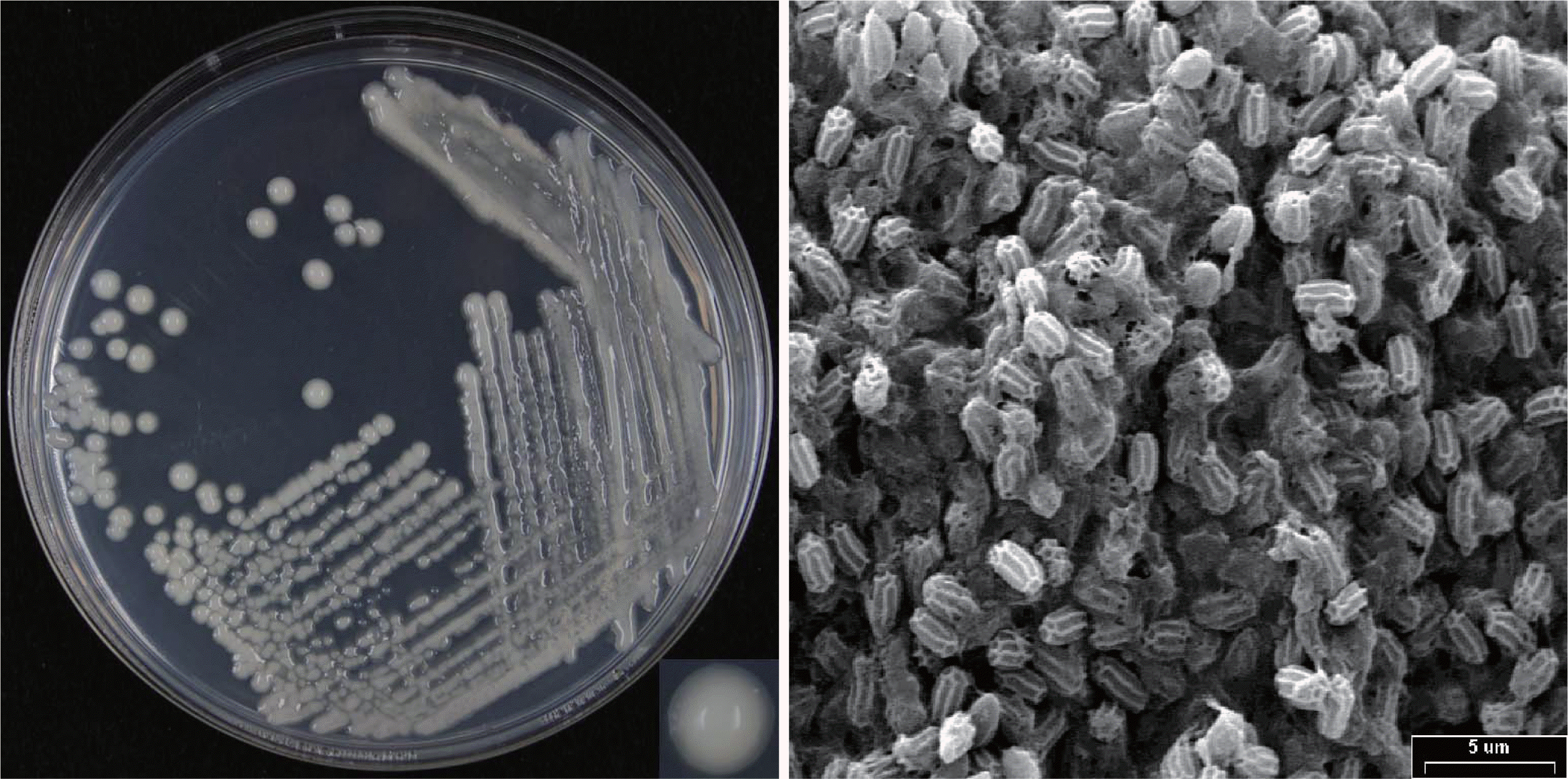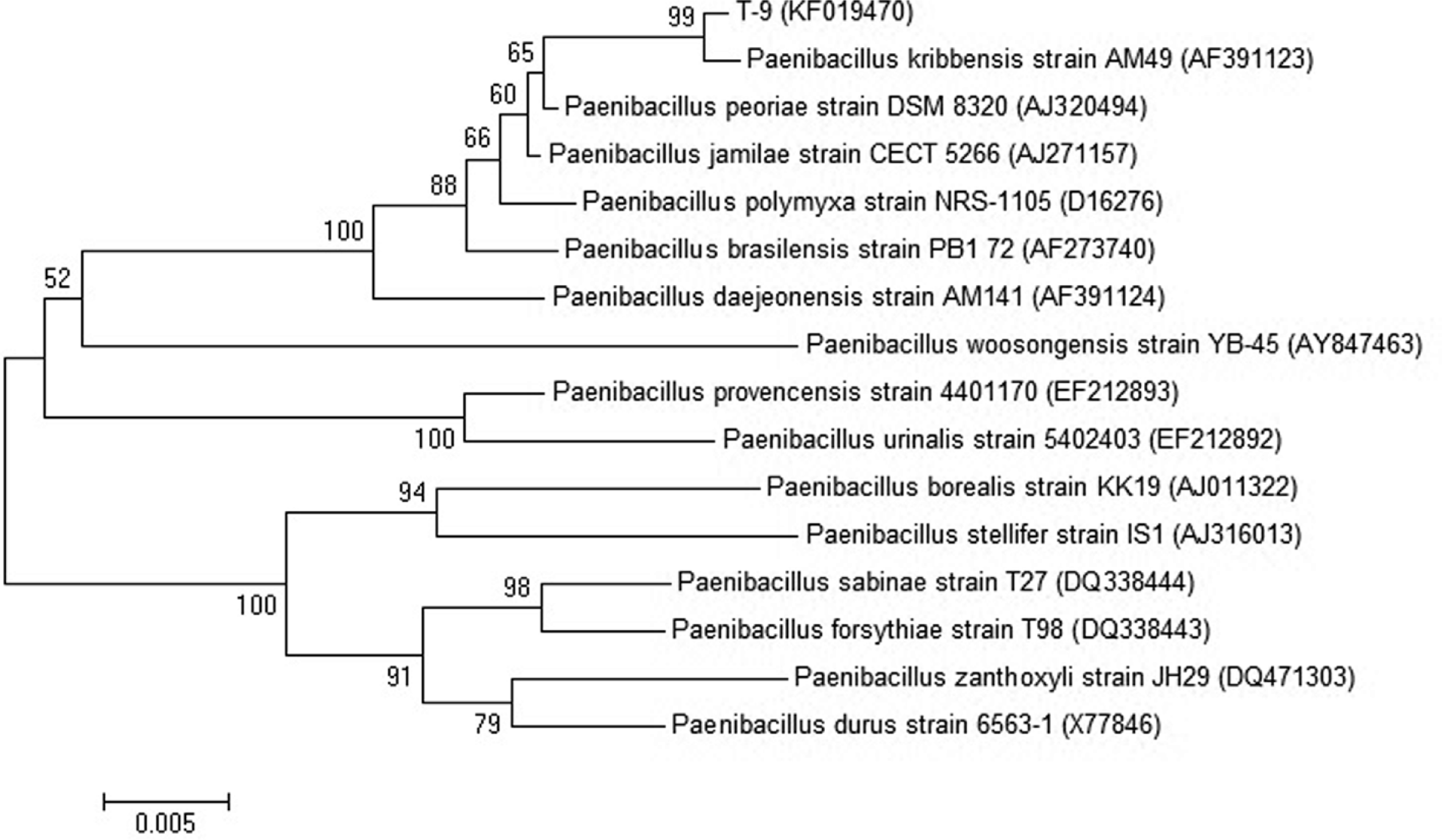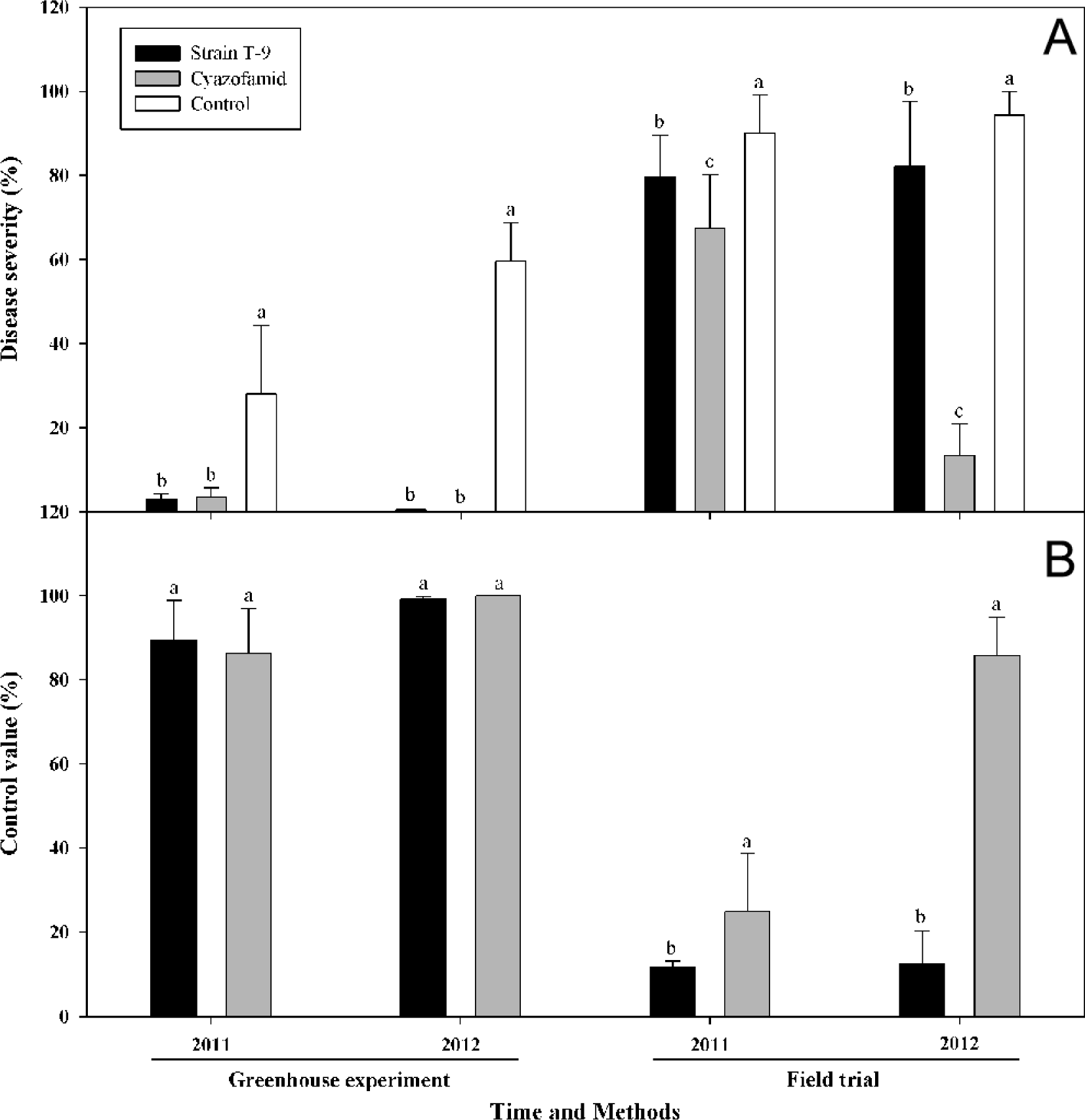Ash, C, Priest, FG and Collins, MD 1993. Molecular identification of rRNA group 3 bacilli (Ash, Farrow, Wallbanks and Collins) using a PCR probe test. Proposal for the creation of a new genus. Paenibacillus Ant Van Leeuwen. 64:253-260.
Bailey, KL and Lazarovits, G 2003. Suppressing soil-borne diseases with residue management and organic amendments.
Soil Till Res. 72:169-180.

Berge, O, Guinebretiere, MH, Achouak, W, Normand, P and Heulin, T 2002.
Paenibacillus graminis sp. nov. and
Paenibacillus odorifer sp. nov., isolated from plant roots, soil and food.
Int J Syst Evol Microbiol. 52:607-616.


Choi, KH, Yi, YS, Lee, SL, Kang, KR, Lee, EJ, Hong, SW, Young, JM, Park, YH, Choi, GJ, Kim, BJ and Lim, YH 2007. Microorganisms against
Plasmodiophora brassicae.
J Microbiol Biotechnol. 17:873-877.

Emmert, EA and Handelsman, J 1999. Biocontrol of plant disease: a (Gram) positive perspective.
FEMS Microbiol Lett. 171:1-9.


Fernando, WGD, Ramarathnam, R, Krishnamoorthy, AS and Savchuk, SC 2005. Identification and use of potential bacterial organic antifungal volatiles in biocontrol.
Soil Biol Biochem. 37:955-964.

Fortes, TO, Alviano, DS and Tupinamb├Ī, G 2008. Production of an antimicrobial substance against
Cryptococcus neoformans by
Paenibacillus brasilensis Sa3 isolated from the rhizosphere of
Kalanchoe brasoloensis.
Microbiol Res. 163:200-207.

Garbeva, P, van Veen, JA and van Elsas, JD 2003. Predominant
Bacillus spp. in agricultural soil under different management regimes detected via PCR-DGGE.
Microb Ecol. 45:302-316.



He, ZG, Kisla, D, Zhang, LW, Yuan, CH, Green-Church, KB and Yousef, AE 2007. Isolation and identification of a
Paenibacillus polymyxa strain that coproduces a novel lantibiotic and polymyxin.
Appl Environ Microbiol. 73:168-178.



Huang, XQ, Zhang, N, Yong, XY, Yang, XM and Shen, QR 2012. Biocontrol of
Rhizoctonia solani damping-off disease in cucumber with
Bacillus pmilus SQR-N43.
Microbiol Res. 167:135-143.

Jin, RD, Han, TH, Kim, YW and Kim, KY 2006. Suppression of clubroot formation in Chinese cabbage by the chitin compost and broth. Agric Chem Biotechnol. 49:171-175.
Kim, BJ, Choi, GJ, Cho, KY, Yang, HJ, Shin, CS, Lee, CH and Lim, YH 2002. Antifungal activities against Plasmodiophora brassicae causing club root. J Microbiol Biotechnol. 12:1022-1025.
Kim, HS, Sang, MK, Jung, HW, Jeun, YC, Myung, IS and Kim, KD 2012. Identification and characterization of
Chryseobacterium wanjuense strain KJ9C8 as a biocontrol agent of Phytophthora blight of pepper.
Crop Prot. 32:129-137.

Kim, SH, Shin, CS, Moon, SG, Yi, YS, Choi, GJ, Cho, KY, Song, JY and Lim, YH 2004. Isolation and characterization of Streptomyces sp. KACC 91027 against Plasmodiophora brassicae. J Microbiol Biotechnol. 14:220-223.
Kim, WI, Won, KC, Kim, SN, Chu, HS, Ryu, KY, Yun, JC and Park, CS 2011. Genetic diversity of cultivable plant growth-promoting rhizobacteria in Korea.
J Microbiol Biotechnol. 21:777-790.


Larkin, RP and Fravel, DR 2002. Effect of varying environmental conditions on biological control of
Fusarium wilt of tomato by nonpathogenic
Fusarium spp.
Phytopathology. 92:1160-1166.


Lee, SO, Choi, GJ, Choi, YH, Jang, KS, Park, DJ, Kim, CJ and Kim, JC 2008. Isolation and characterization of endophytic actinomycetes from Chinese cabbage roots as antagonists to
Plasmodiophora brassicae.
J Microbiol Biotechnol. 18:1741-1746.

Li, QL, Ning, P, Zheng, L, Huang, JB, Li, GQ and Hsiang, T 2012. Effects of volatile substances of
Streptomyces globisporus JK-1 on control of
Botrytis cinerea on tomato fruit.
Biol Control. 61:113-120.

Liu, WW, Mu, W, Zhu, BY, Du, YC and Liu, F 2008. Antagonistic activities of volatiles from four strains of
Bacillus spp. and
Paenibacillus spp. against soil-borne plant pathogens.
Agric Sci China. 7:1104-1114.

Mendes, R, Kruijt, M, de Bruijn, I, Dekkers, E, van der Voort, M, Schneider, JHM, Piceno, YM, DeSantis, TZ, Andersen, GL, Bakker, PAHM and Raaijmakers, JM 2011. Deciphering the rhizosphere microbiome frome for disease-suppressive bacteria.
Science. 332:1097-1100.


Nishiguchi, MK, Doukakis, P, Egan, M, Kizirian, D, Phillips, A, Prendini, L, Rosenbaum, HC, Torres, E, Wyner, Y, De-Salle, R and Giribet, G 2002. DNA isolation procedures. In:
Methods and Tools in Biosciences and Medicine: Techiques in molecular systematics and evolution, eds. by R DeSalle, G Giribet and W Wheeler, 279-280. Birkh├żuser Verlag, Basel, Switzerland.

Raza, W, Yang, W and Shen, QR 2008. Paenibacillus polymyxa: antibiotics, hydrolytic enzymes and hazard assessment. J Plant Pathol. 90:419-430.
Ryu, CM, Kim, JW, Choi, OH, Park, SY, Park, SH and Park, CS 2005. Nature of a root-associated Paenibacillus polymyxa from field-grown winter barley in Korea. J Microbiol Biotechnol. 15:984-991.
Takagi, H, Shida, O, Kadowaki, K, Komagata, K and Udaka, S 1993. Characterization of
Bacillus brevis with descriptions of
Bacillus migulanus sp. nov.,
Bacillus choshinensis sp. nov.,
Bacillus parabrevis sp. nov., and
Bacillus galactophilus sp. nov.
Int J Syst Evol Microbiol. 43:221-231.

von der Weid, I, Duarte, GF, van Elsas, JD and Seldin, L 2002.
Paenibacillus brasilensis sp. nov., a novel nitrogen-fixing species isolated from the maize rhizosphere in Brazil.
Int J Syst Evol Microbiol. 52:2147-2153.


von der Weid, I, Alviano, DS, Santos, ALS, Soares, RMA, Alviano, CS and Seldin, L 2003. Antimicrobial activity of
Paenibacillus peoriae strains NRRL BD-62 against a broad spectrum of phytopathogenic bacteria and fungi.
J Appl Microbiol. 95:1143-1151.


von der Weid, I, Artutsson, V, Seldin, L and Jansson, JK 2005. Antifungal and root surface colonization properties of GFP-tagged Paenibacillus brasilensis PB177. World J Microbiol Biotechnol. 12:1591-1597.
Wang, J, Huang, Y, Lin, S, Liu, F, Song, Q, Peng, YL and Zhao, L 2012. A strain of
Streptomyces griseoruber isolated from rhizospheric soil of Chinese cabbage as antagonist to
Plasmodiophora brassicae.
Ann Microbiol. 62:247-253.


Yoon, JH, Oh, HM, Yoon, BD, Kang, KH and Park, YH 2003.
Paenibacillus kribbensis sp. nov. and
Paenibacillus terrae sp. nov., bioflocculants for efficient harvesting of algal cells.
Int J Syst Evol Microbiol. 53:295-301.










 PDF Links
PDF Links PubReader
PubReader Full text via DOI
Full text via DOI Full text via PMC
Full text via PMC Download Citation
Download Citation Print
Print




